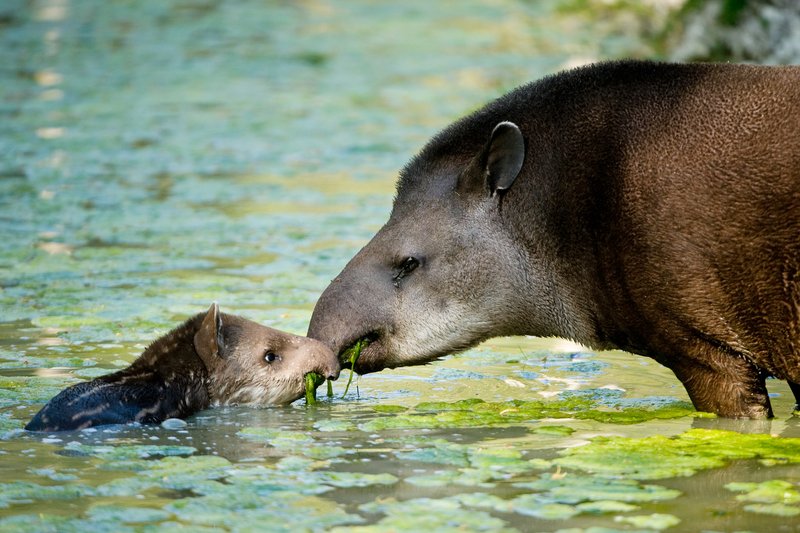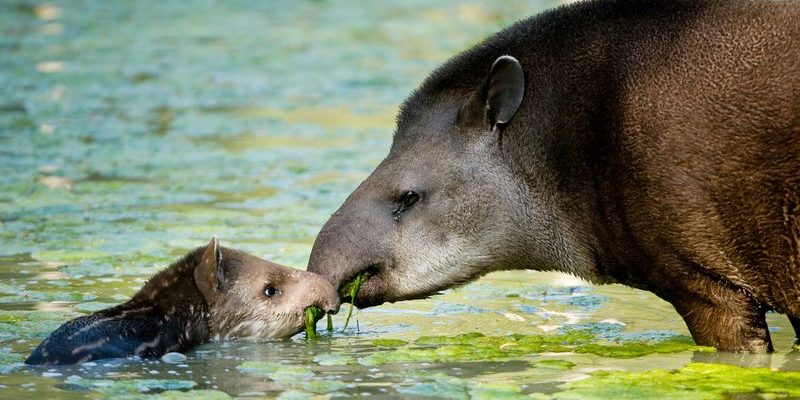
In many tropical and subtropical regions, tapirs are often overlooked, yet their presence is essential. These herbivorous mammals, which can weigh anywhere from 500 to 1,000 pounds, are more than just curious-looking animals—they’re key players in their ecosystems. By understanding the tapir’s role, we see how interconnected life can be and how every species matters, no matter how big or small.
What Are Tapirs?
To kick things off, let’s get to know the tapir just a little better. Tucked away in the jungles of South America and parts of Southeast Asia, tapirs are large, stout mammals that generally prefer to stay close to water. They have a distinctive body shape, short legs, and a cute, flexible snout that resembles a miniature trunk.
There are four species of tapirs: the Brazilian, Baird’s, Malayan, and mountain tapir. Each species has its unique traits, but they all share similar habitats, making them critical to their surroundings. Think of them as the gentle giants of the forest—quietly going about their business, munching on leaves, fruits, and plants.
Tapirs as Seed Dispersers
One of the most significant roles tapirs play in their ecosystems is being excellent **seed dispersers**. When they munch on fruits, they consume seeds and then travel long distances before depositing them in their droppings. This process isn’t just a routine meal; it’s a vital contribution to plant reproduction.
Here’s the thing: many plants rely on animals like tapirs to spread their seeds effectively. Without these creatures, certain plant species could struggle to reproduce or even face extinction! In essence, tapirs help create new plant life in places they might not grow otherwise, promoting biodiversity. Imagine a tapir as a little gardener, planting seeds throughout the forest with every step it takes.
Impact on Vegetation Structure
Tapirs also have a direct influence on **vegetation structure** within their habitats. By feeding on specific types of plants—often those that are overabundant—they help keep the plant community balanced. This selective foraging prevents certain plants from taking over and allows a variety of species to thrive.
For instance, if tapirs eat a lot of young saplings, they give taller trees and other plants a chance to grow and flourish. In doing so, they help maintain the intricate tapestry of life in their ecosystem. By keeping the plant community diverse and healthy, tapirs indirectly support a myriad of other animals that rely on this habitat for food and shelter.
Water Cycle Regulation
Let’s talk about the **water cycle** and how tapirs fit into this picture. By living in and around wetlands and forest streams, tapirs play a role in maintaining water quality. Their movement through the forest can help promote the growth of plants that stabilize soil and prevent erosion, which is crucial for clear water sources.
When tapirs feed on vegetation near waterways, they help regulate the flow of water through the ecosystem. Healthy plants can absorb and filter water, leading to cleaner streams and rivers. It’s a win-win—tapirs enjoy their meals, while the ecosystem benefits from their actions. Think of them as nature’s little helpers, ensuring clean and flowing water for all.
Tapirs and The Food Chain
Tapirs also hold a **place in the food chain**. While they’re not at the top, their presence supports other species that depend on them as prey. Predators like jaguars, pumas, and crocodiles rely on tapirs for sustenance.
By providing food for these larger animals, tapirs help sustain the balance of predator-prey relationships within their ecosystems. If tapirs were to disappear, it could lead to an overpopulation of some species and the decline of others, demonstrating just how interconnected all life is in these habitats.
Conservation Status and Threats
Unfortunately, tapirs face several threats that put their role in the ecosystem at risk. **Habitat loss**, primarily due to deforestation and agriculture, is the most significant danger. As their homes shrink, tapirs struggle to find food, mates, and safe shelter.
Additionally, hunting and poaching further threaten their populations. Conservation efforts are crucial to protect tapirs and maintain the balance of the ecosystems they inhabit. By supporting tapir conservation, we are not just helping one species; we are preserving the intricate web of life that relies on them.
How You Can Help
You might be wondering how you can contribute to the conservation of tapirs and their habitats. Here are some ways you can make a difference:
- Educate Yourself: Learn about tapirs and share your knowledge with others.
- Support Conservation Organizations: Donate to groups dedicated to protecting tapirs and their environments.
- Reduce Deforestation: Advocate for sustainable practices that protect forests and wildlife.
- Reduce Your Eco-Footprint: Make environmentally friendly choices in your daily life.
Every little action counts! By understanding and supporting tapirs, you help preserve not just their future but the health of the ecosystems they support.
In closing, tapirs might look like just another unique animal, but they serve crucial roles in their ecosystems. From seed dispersers to maintainers of water quality, their presence is vital for sustaining biodiversity. So, next time you see a tapir, remember that these gentle giants are not just interesting to look at; they’re essential to the health of our planet. Let’s work together to ensure they continue their important work for generations to come!

